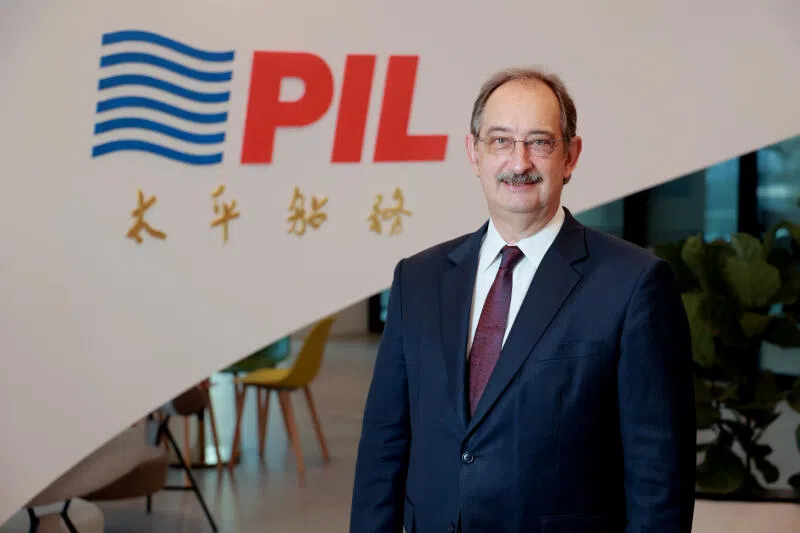SINGAPORE container carrier Pacific International Lines (PIL) is in the process of renewing its fleet, with an order for five liquefied natural gas (LNG) dual-fuel container vessels. Each one has a capacity of 13,000 twenty-foot equivalent units (TEU).
PIL said on Monday (Aug 19) that the vessels are expected to be delivered progressively from end-2026. They are equipped with dual-fuel engines and auxiliaries that can run on both LNG and low sulphur fuel oil.
Lars Kastrup, chief executive of PIL, said the vessels will have a high refrigerated container capacity payload to support the company’s transport of fresh fruits, vegetables, seafood, meat and pharmaceuticals.
The vessels will also have digital features, incorporating artificial intelligence and Internet of Things, to allow for tasks to be automated.
Kastrup said the fleet renewal strategy is focused on using larger and more eco-friendly vessel types.
The latest order’s vessels will incorporate energy-saving features including motors for larger pumps and ventilation blowers, as well as lower-energy LED lighting.
BT in your inbox
Start and end each day with the latest news stories and analyses delivered straight to your inbox.
“Together with another eight vessels we currently have under construction, we now have 13 new vessels that will contribute significantly towards our decarbonisation goal of net-zero emissions by 2050,” he said.
Chinese shipbuilder Hudong Zhonghua Shipyard will construct the five new vessels.
PIL is in the midst of building four 14,000 TEU and four 8,200 TEU LNG dual-fuel container vessels, with the first two 14,000 TEU vessels set to be delivered later this year.
In April this year, PIL posted an FY2023 net profit of US$277.6 million – about 10 per cent of FY2022’s earnings of US$3 billion. It recorded revenue to December of US$2.9 billion, 53 per cent lower than the previous year’s US$6.1 billion.
The carrier said it aims to increase its offering of refrigerated container shipping to mitigate volatility in general container freight rates and tap demand for temperature-controlled products in its key markets.



![Viral Moment: Trump Mimics “Sex Act” on Mic Stand, Stuns Wisconsin Crowd [Watch Video]](https://data.ibtimes.sg/en/full/77741/viral.jpg)


